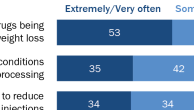Aid-in-dying and physician-assisted-suicide laws State laws making it legal for a physician to prescribe lethal medication to a terminally ill, mentally competent patient who wants to end his or her life. This is currently allowed in four states: Oregon, Washington state, Montana and Vermont. Each state has different conditions under which physician-assisted suicide is legal. Elsewhere, such an act would be considered a felony.
Euthanasia The act or practice of ending the life – by lethal injection or the suspension of extraordinary medical treatment – of an individual suffering from a terminal illness or an incurable condition. Colloquially, euthanasia is sometimes referred to as “mercy killing” because the intent is often to provide relief to someone suffering from a debilitating chronic or terminal illness through a painless death. The Greek origins of the term are commonly translated as “a good death.” Passive euthanasia refers to withholding medical treatment that would keep a patient alive, such as life-support machines to feed or assist a patient in breathing. Active euthanasia refers to taking specific actions, such as injecting a lethal dose of drugs to cause death.
Hospice care Medical treatment for the seriously ill that accepts death as an inevitable outcome for a patient with a terminal (or end-stage) illness. The treatment is focused on maximizing quality of life by reducing pain and other symptoms for those likely to die within, at most, about six months if their disease runs its normal course. Hospice care is not used in conjunction with treatments intended to cure a disease. It is typically provided in a home setting but can also take place in a hospital or assisted-living facility.
Life-sustaining medical treatment Medical interventions that may prolong the life of a patient. These may entail treatments such as antibiotics, insulin, chemotherapy, nutrition and hydration provided intravenously as well as more technically demanding interventions such as organ transplant, respirators, kidney dialysis and vasoactive drug treatment.
Palliative care Medical treatment for the seriously ill that is focused on improving a patient’s quality of life by managing any physical and psychosocial symptoms associated with illness. Palliative care can occur simultaneously with treatments intended to cure a disease. It is typically offered in hospitals but can also take place in assisted-living facilities or in home-care settings.
Suicide Historically, suicide was often considered a felony under state law. At the present time, no U.S. state lists suicide as a crime, although some still consider it a “common law crime.” All states have some form of involuntary commitment law, however, designed to prevent suicide by empowering or requiring the state to commit anyone believed to be suicidal for evaluation and treatment.




